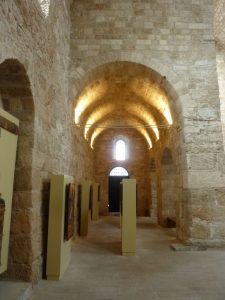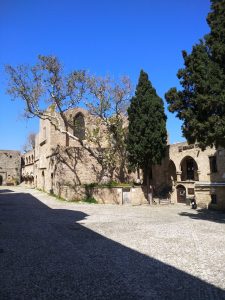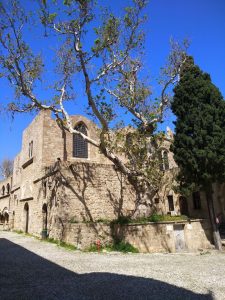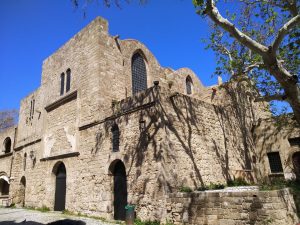Description
The majestic church of Panagia of the Castle, is standing at the eastern end of Ippoton street, in the area of the medieval city called Kollakion. The church was built in the late 11th century and belonged to the domed, cross-in-square architectural type. In 1309 the island was conquered by the Order of the Knights of St. John and the church was converted into a Gothic three-aisled basilica with a transept and became the Catholic cathedral of the island, an event mentioned in a papal bull of 1322.
The most important changes were made in the superstructure of the building where the Byzantine dome was replaced by ribbed cross-vaults. The large-scale works were conducted during the period of the Grand Master Villeneuve (1319 - 1346), as confirmed by the coats-of-arms of Villeneuve himself and Pope John XXII which are preserved in the central pointed-arched window of the apse. The decoration of the interior is no longer preserved with the exception of some fragmentary parts of the wall-paintings, representing the Holy Mother of God and four other saints. The best preserved among them is the figure of St. Lucia dated to the 14th century. It is assumed the work of a European painter, probably of the Giotto School, whereas the other frescoes combine Byzantine and Western European elements.
In 1522 the Ottoman Turks occupied Rhodes and the church of Panagia was once more converted, this time into a mosque, called the Ederum or Kadouri Tzami. A minaret and a mihrab (recess for prayer) were added, while the white-washing of the walls caused the destruction of the wall-paintings. The additions of the Ottoman era were removed during the Italian occupation (1912-1947).
Since 1988 the church of Panagia houses an exhibition of Byzantine and post-Byzantine painting, including portable icons of the 17th and 18th centuries and wall-paintings detached from the church of St. Zacharias at Chalki (14th century) and from the monastery of the Archangel Michael at Tharri of Rhodes (17th century). The collection also includes a group of architectural members and mosaics of the Early Christian period.
Location
36.44507011748836,28.227279671349685






